Veteran turnover rates in the workplace are high. According to the U.S. Census Bureau and the
Department of Defense, turnover in the first year of civilian employment for veterans is 43%.
These high rates are partly due to the employer not understanding the background of the
military and the structure that veteran employees served in for most of their careers, and the
veteran not understanding how they can add value and “fit in” in a civilian work environment.
Veterans are incredibly valuable employees: They bring unique experiences, and perspectives,
and embody resiliency, teamwork, leadership, and commitment. Because of their unique work
experiences in the military, many suffer from PTSD, depression, and anxiety, and experience a
loss of structure and camaraderie, which can impact many areas of their lives, including their
careers. This is why it’s crucial that employers not only recognize the unique needs of veterans
but create a supportive environment where they can thrive and succeed.
Companies that have established veteran hiring programs tend to see lower veteran turnover
rates. JPMorgan Chase and USAA are great examples of companies that have invested in
veteran employees and have been recognized nationally for their efforts in supporting
veterans. They have dedicated teams that focus on recruiting, hiring, and supporting veterans,
offering programs and initiatives such as mentorship, training, networking, and tuition
reimbursement. These companies are great examples of being “Veteran Ready,” which means
that they have taken the time to understand the unique value veterans bring to the workplace
and understand what veterans need to succeed and thrive.
To create a Veteran Ready workplace, companies should take the time to understand the
veteran transitioning process and what support they need. It’s also important to recognize the
challenges many veterans experienced throughout their time in service and ensure they have
the necessary support to succeed.
Here are three things companies can do today to improve engagement and motivation among
their veteran employees:
1. Identify your veteran population and schedule a town hall. This is a great way to
identify their needs and challenges.
2. Set up an employee volunteer community service group and ask veteran
employees to lead it. This gives them an opportunity to serve their community and be
part of a group with a specific purpose.
3. Work with professionals such as myself who specialize in veteran transition and
support. I help you successfully create a sustainable “Veteran Ready” workplace culture
within your company.
It’s important to keep the lines of communication open with your veteran employees to ensure
their voices are heard and so you can meet their needs. These employees will be your hardest
workers and best leaders, but you need to make sure you cultivate an environment where they
thrive.
Connect with me today to start building your Veteran Ready workplace!

